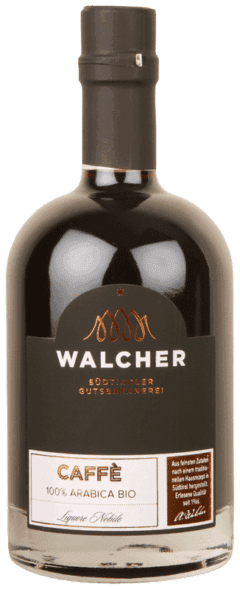14 March 2025
Wine and Chocolate Pairings
Chocolate and wine pairings can be a divine experience for your senses – a match made in heaven that you truly need to experience if you haven’t already!
As with food and wine matching in general, we don’t think you should get too hung up about what works best. It can all be very subjective!
Chocolate and Wine Pairings – to be or not to be? ????
Chocolate and wine is one of those tricky and much-discussed combinations, the only sure-fire answer is that if a pairing works for you, then that pairing is a success!
With a colossal abundance of flavours and types of chocolate now available (geranium, pistachio or banana anyone?), if you enjoy experimenting and aren’t afraid to try something new, you can have fun and find some delicious combinations.
Well, I never knew that…
Did you know chocolate and wine are made in the same way? (including a fermentation, the same yeasts). Did you also know cocoa trees grow some 12-15 metres high, and produce just 20-30 cocoa pods (like small yellow rugby balls), with each tree producing just a few bars of chocolate?!
Understanding how cocoa beans are turned into chocolate and how some chocolates are made sweet or intensely bitter can help you understand why certain chocolate and wine pairings generally work and others don’t. And hey, both can even be good for you!
Where to start? Here’s some basic advice about pairing chocolate and wine

Pairing chocolate and wine can be tricky, largely because the products can have so much in common, and the tannins in each end up fighting on your palate. A sweet chocolate, for example, makes a very dry wine bitter and thin and can mask its fruity flavours.
Some say that lighter flavoured chocolate (like milk chocolate) should be matched with lighter wines (e.g., a Pinot Noir), and the more intense chocolates with bigger wines like a Malbec, Shiraz or fortified wines. More often than not we are talking red rather than white wine.
However, it’s a matter of preference! Some gravitate towards fuller-bodied styles of reds (like a Shiraz or Cabernet Sauvignon) to have with chocolate, while others prefer fresher styles (ie a Pinot Noir, Gamay, etc).
Without further ‘chocolate’ ado, here are a few specific ideas from our organic wine selection. Naturally, we are bound to recommend going for good quality and preferably organic chocolate too.
Pairing wine with MILK chocolate

We thought we’d start with milk chocolate as it does seem to be the most preferred type of chocolate. The sweetness in milk chocolate can range, but generally it’s between 35-55% cocoa content. If you have something with around 35% cocoa, it will likely be more sweet than a chocolate with 55% cocoa content.
Milk and lighter chocolates should be matched with lighter wines, like a Pinot Noir or a lighter Merlot, or sweeter dessert wines or a Port. Here a some good pairing ideas for milk chocolates:
More affordable than Sauternes, and made in the same way, Monbazillac is a popular French dessert wine. Chateau Vari’s Monzabillac has the sweetness for a perfect match for milk chocolates.
Another combination is the nutty Casal dos Jordoes Tawny Port – perfect for any chocolate with nuts in it, or dark chocolate too.
If you want to stick with a classic red, why not choose a wine with complimentary chocolatey notes, like Chateau Vieux Chevrol Lalande de Pomerol’s Grand Vin.
Pairing wine with DARK chocolate

Dark chocolate is less sweet than milk chocolate and also quite a popular type of chocolate today. It has a higher cocoa content, which can go up to even 90%! For dark chocolates, you’ll generally want to choose a bigger wine (like a rich Shiraz or Malbec), or even something fortified like a good Port.
Here are four organic wines that would pair well with dark chocolate.
With a beguiling combination of cassis, coffee and chocolate flavours, you really can’t go wrong with Domaine Bousquet’s Fortified Malbec for dark chocolate.
Another wine with chocolatey flavours that would suit dark chocolate is Cantina Orsogna Elementa Primitivo (Primitivo is the same varietal as Zinfandel).
With a moreish sweet edge and made using the ‘Appassimento’ method (the drying of grapes before the wine is made), Mirasoles Appassimento Monastrell would also go with richer chocolates.
Lastly, Port is often recommended for dark chocolate pairings, and this Casal Jordoes Finest Reserve Port is an excellent organic option.
Pairing wine with WHITE chocolate – pairing white chocolate with wine

Remember that white chocolate contains no cocoa powder at all, it’s made just from cocoa butter and sugar. It’s quite a sweet type of chocolate, so you want to pair white chocolate with a wine that’s also sweet. Sweeter Rieslings can work, as well as dessert wines. Here’s a dessert wine and two others that would match white chocolates perfectly.
Stellar Organics Heaven on Earth Sweet Muscat would also be a good choice for white chocolate (and sweeter chocolates like milk chocolate too).
Pinot Noir is said to be a shockingly good pairing for white chocolate, with white chocolate delivering the fruit flavours found in the Pinot Noir. Consider the Theodorus Spatburgunder, a German Pinot Noir.
For a white wine for your white chocolate, go for this off-dry Kabinett Riesling from Timo Dienhart from the famous Mosel Valley.
Just give me a beer! A special Chocolate Stout
OK, and if you prefer not to juggle food and drink, why not select the perfect ‘all in one’ solution. A perfect marriage of satisfying stout and luxurious chocolate.
Two splendid organic liqueurs for chocolate
These two organic liqueurs would also go well with chocolate too. We’d recommend the Amaretto for sweeter chocolates (white or milk) and the Coffee Liqueur for dark chocolate … perhaps alongside a nice cup of coffee/espresso or espresso martini!
Wine pairings for other types of chocolates

- Chocolate with strawberries: go for Giol’s Luisa Frizzante Rosé or Champagne Fleury Rosé Brut
- Chocolate cake/brownies: it depends how sweet and chocolatey the cake or brownies are, for something richer Domaine Bousquet’s Fortified Malbec is always a safe bet
- For caramel chocolates: try a bottle of Casal Jordoes’ Fine Tawny Port or Piedra Luenga Oloroso Sherry
- For orange flavoured chocolate: for an exotic pairing, go for something orange as well, like the Santa Tresa Insieme Orange or even the Arancello Blood Orange Liqueur
- For white or milk chocolate with stronger vanilla content or milk chocolate with nuts: try Domaine Bousquet’s Reserve Chardonnay, the oaky vanilla edge in the Chardonnay will complement and match the flavours in the chocolate.
Know what to do? How to taste chocolate and wine together
How do you taste? Take your time, as this is a five sensory experience. First unwrap your chocolate, sniff, inhale and identify its aromas. It should be room temperature.
Then break off a piece, put this into your mouth and allow it to melt on your tongue (don’t devour, tempting though it might be), noting the flavours and whether the chocolate tastes bitter or sweet, before swallowing.
Next take your wine, looking for appearance and aromas, taking a mouthful, noting the dryness or sweetness, fruitiness, acidity and weight.
Now put another piece of chocolate in your mouth, and as it melts, whilst the chocolate still coats your tongue, take a sip of wine, and think about how this combination is crafting itself before you. Does it work, or not? Take notes if you like!
Rocket science it ain’t, and we hope you will enjoy some experimenting. Why not let us know some of your successes, or even epic failures?!























